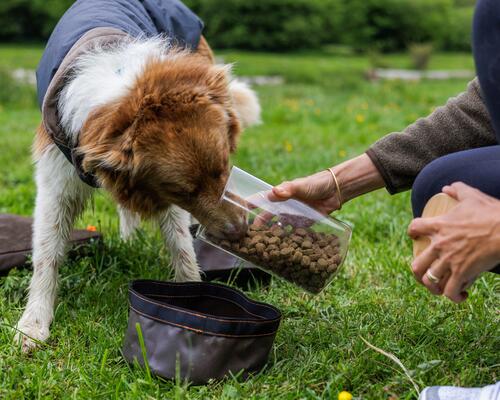Case 1/ your dog is very thin
If you follow the recommended amounts on the kibble packets and your dog looks very thin, then the product is not suited to your dog's activity level. However, diet is not the only factor that can explain this condition: your pet may be affected by external factors (such as worms or germs), which may affect its ability to assimilate kibble. Our first piece of advice is to deworm your dog and have a check-up with your vet.
At the same time, we also recommend switching to a range of kibbles offering more fat and more protein. Your four-legged friend will then gradually return to a healthy weight.









